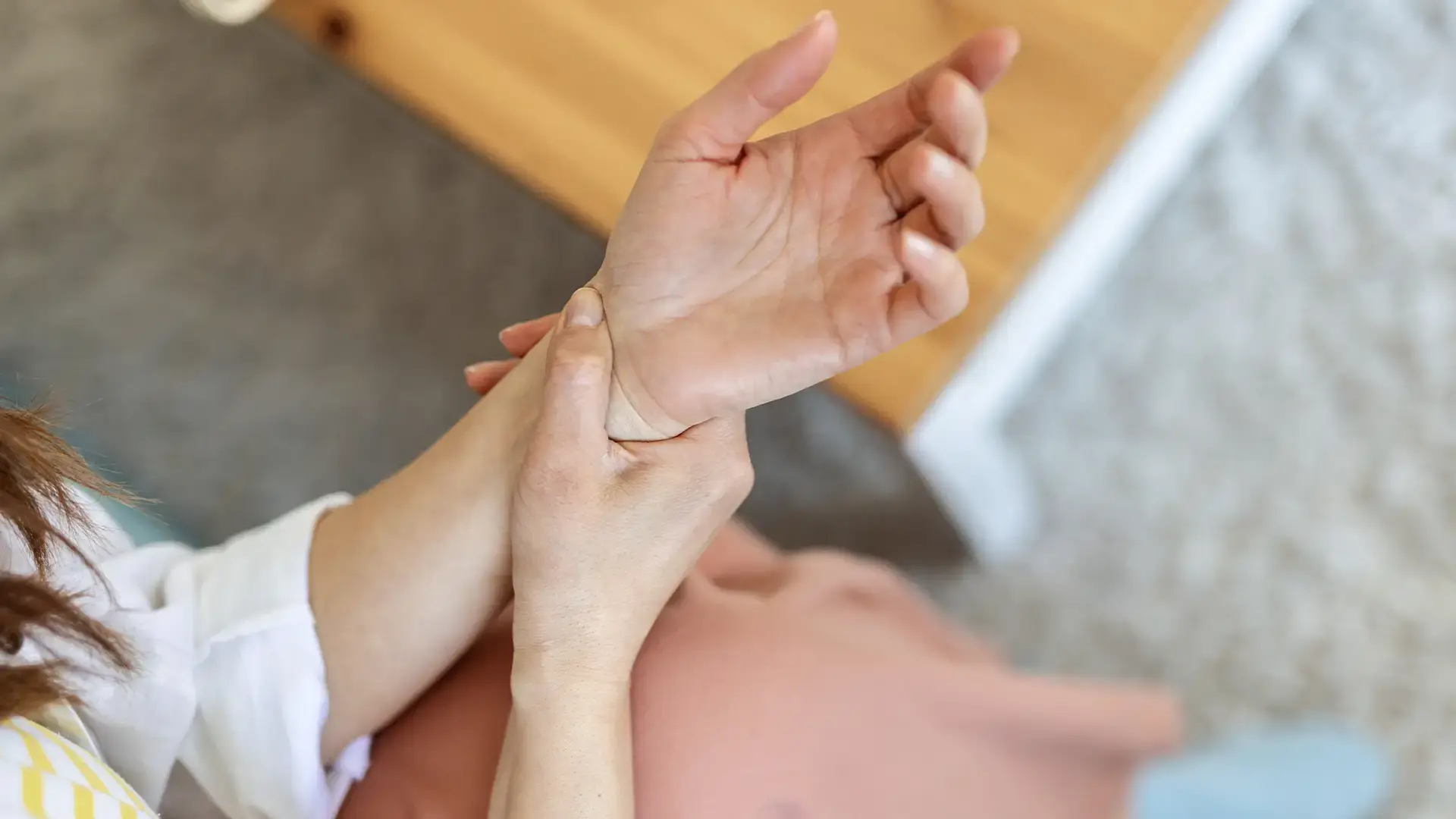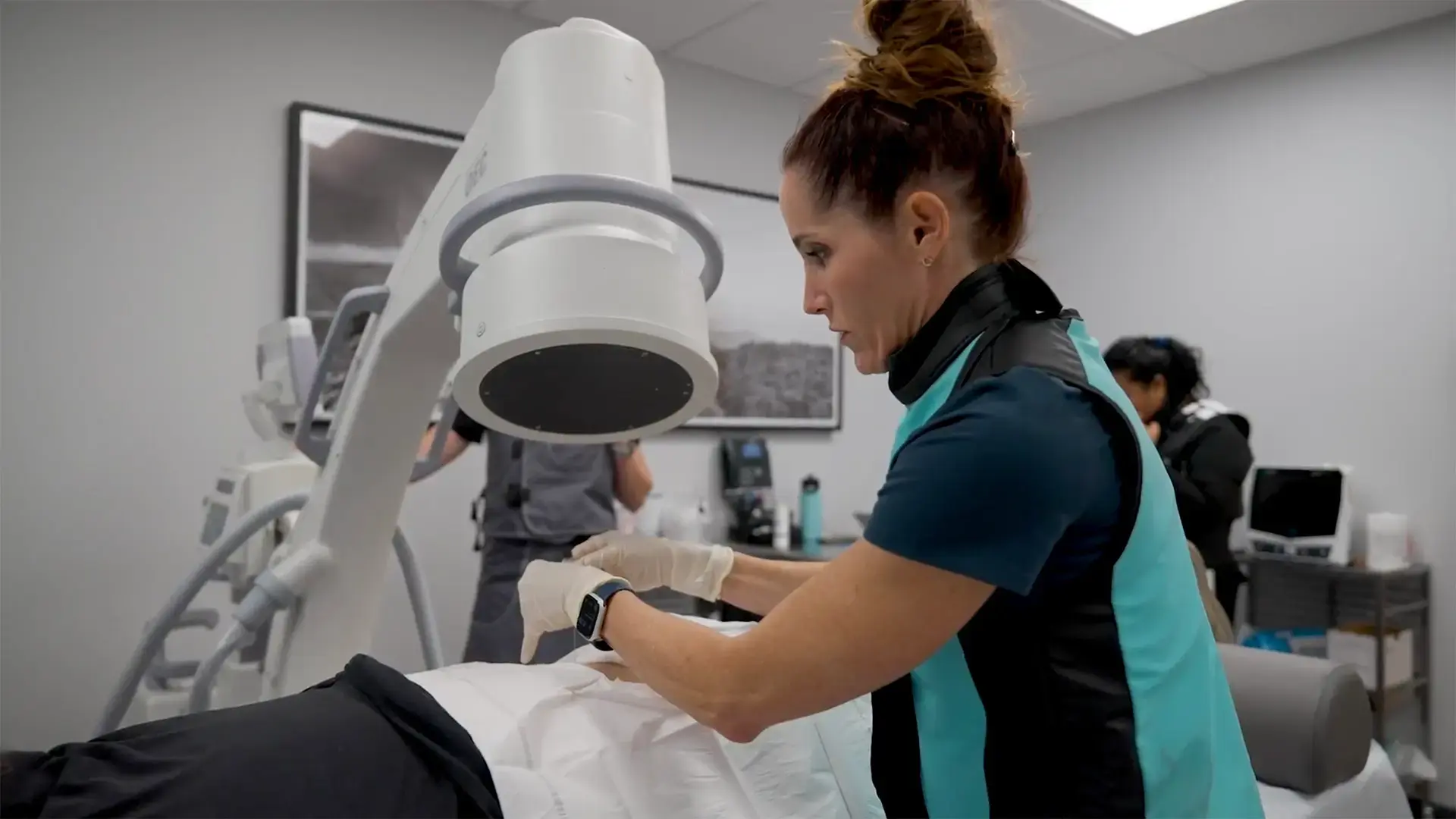Early Signs of Osteoarthritis in the Spine, Shoulders, and Knees
.webp?width=1920&height=1080&name=DSSP%20%20-%20Early%20Signs%20of%20Osteoarthritis%20in%20the%20Spine%2c%20Shoulders%2c%20and%20Knees%20(1).webp)
You might be tempted to ignore aching joints, especially when the pain comes and goes. However, when stiffness, discomfort, or limited movement interfere with everyday activities, it may be a sign of osteoarthritis (OA). This condition is one of the most common causes of joint pain in adults, and early detection can make a meaningful difference in slowing its impact.
At Desert Spine and Sports Physicians, our board-certified physiatrists and pain management physicians specialize in diagnosing and managing osteoarthritis. They achieve this through non-surgical, evidence-based arthritis solutions to relieve pain, restore function, and help patients maintain an active lifestyle.
Key Takeaways
- Osteoarthritis develops gradually, and early detection can help slow its progression.
- Early signs include joint stiffness, mild swelling, clicking, and pain with movement.
- If symptoms persist or limit you, it’s time to see a specialist.
Understanding Osteoarthritis: A Progressive Joint Condition
Often referred to as “wear-and-tear,” osteoarthritis develops when the cartilage that cushions joints starts to break down. As cartilage thins, bones rub against each other, leading to pain, swelling, stiffness, and inflammation of the surrounding bone and soft tissues.
Although age is the most common risk factor, osteoarthritis isn’t just a result of getting older. It can also occur from a joint injury, repetitive motion from work or sports, or underlying issues such as obesity or genetics. Recognizing symptoms early allows patients and physicians to create an osteoarthritis treatment plan that preserves joint health and mobility for as long as possible.
General Early Symptoms to Watch For
Osteoarthritis symptoms often start subtly. You can identify the condition sooner by paying attention to changes in how your joints feel and move. Common warning signs include:
- Joint stiffness after rest or sleep
- Mild swelling or tenderness around the affected joint
- Clicking or grinding sensations when moving
- Restricted range of motion
- Pain that worsens with activity but may improve with rest
These symptoms may come and go at first, but over time, they tend to become more persistent.
Early Signs of Osteoarthritis in the Spine, Shoulders, and Knees
Because osteoarthritis can affect nearly any joint, understanding how it presents in specific areas can help you seek help sooner.
Spine
When osteoarthritis affects the spine, it can cause:
- Dull or aching pain in the lower back or neck
- Stiffness after sitting or sleeping
- Popping in the neck
- Numbness, tingling, or weakness if nearby nerves are compressed
- Difficulty twisting, bending, or extending the back or rotating the neck
These symptoms can make it uncomfortable to sit for extended periods or perform daily activities such as lifting, driving, or walking.
Shoulders
The shoulder joint is one of the most mobile in the body, and that flexibility makes it prone to wear. Early signs of shoulder arthritis may include:
- Gradual stiffness or weakness
- Discomfort during overhead motions or reaching behind the back
- Clicking, grinding, or catching when moving the arm
- Reduced range of motion or difficulty with daily tasks like dressing or washing hair.
These symptoms can be mistaken for tendonitis or a rotator cuff injury, making an accurate diagnosis key to effective treatment.
Knees
Because they bear much of the body’s weight, the knees are among the most commonly affected joints. Watch for:
- Pain during activities such as climbing stairs, squatting, or walking
- Stiffness after long periods of sitting
- Swelling, warmth, or tenderness around the knee
- A feeling of locking, catching, or instability in the joint
Left untreated, knee osteoarthritis can limit mobility and interfere with exercise, work, or rest.
Why Early Detection Matters
Osteoarthritis cannot be reversed, but its progression can be slowed. Identifying the condition in its early stages allows for osteoarthritis treatment plans that may include:
- Image-guided injections to reduce inflammation and improve function
- Regenerative treatment options, such as platelet-rich plasma (PRP therapy) or bone marrow aspirate concentrate (BMAC therapy), to support healing
- Physical therapy to strengthen muscles and enhance joint stability
- Lifestyle modifications, including weight management and low-impact exercise, to protect joints
Diagnosis and management can preserve joint health, help with arthritis pain, and keep patients active longer, often without relying on surgery or long-term pain medication.
When to See a Desert Spine And Sports Non-Surgical Specialist
If you are experiencing persistent or recurring joint pain, limited movement or stiffness, or pain that worsens despite rest, exercise, or the use of over-the-counter medications, you should schedule an evaluation with a specialist.
At Desert Spine and Sports Physicians, our fellowship-trained physiatrists and pain management physicians provide comprehensive, non-surgical care for joint conditions. Using advanced imaging and regenerative therapy, we help patients achieve long-term relief without the need for unnecessary surgery.
With six convenient Arizona locations, our specialists offer the experience, precision, and care you need to move comfortably and confidently again. Schedule an appointment today.





